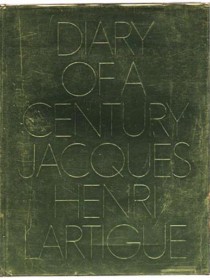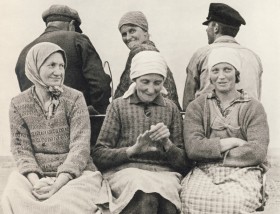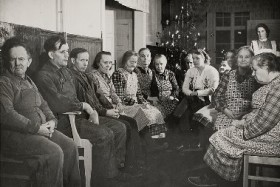The family has gathered again. The Nordic documentary community, whose members know each other so well, and who help each other. And who often do coproductions. The family had invited friends from other European broadcasting and sales companies, well some had even crossed the Atlantic Ocean to take part. Look at the photo, there are many around the table, and what you don’t see is the audience on all three sides listening to the pitching teams, applauding after the teaser is shown, after the end of the verbal pitch and after the Q&A. It’s quite Pavlovian. The set-up works, the technique works, there is just a little overtime from those pitching. It’s in the hands of experienced moderators, this year again the Danes Mikael Opstrup and Gitte Hansen, who lives and works in Zürich and told me that she now also has a Swiss citizenship.
Yes, that’s the way it is, you hug and kiss and catch up with good
friends in an atmosphere that is friendly. But also result-orientated as Nordisk Panorama director Søren Poulsen said in his welcome speech. With this 23rd edition 677 projects had passed the Forum, there had been 4100 participants and a success rate indicated that 70% had profited one way ot the other financially from taking part in a Forum session.
First on stage was Danish producer Jesper Jack and director Marie Skovgaard with ”Femimam” about Sherin Khankan who – ”with other progressive muslims”, as the catalogue says – has opened a mosque in Copenhagen run by women with a future ambition to have female imams. It is still very new but Skovgaard has got very close to Khankan, who has a name internationally as well. She will travel with her, catch moments where she gets into trouble, her project is met with death threats in the community. Jesper Jack told that 40% of the financing is in place, SVT with Charlotte Gry Madsen seemed interested if ”there’s a tie to Malmö”. It was definitely something new and well presented, maybe not so much through the trailer as the verbal presentation by the committed director. It would surprise me if they do not pick up some funding at the individual meetings that followed in the afternoon. These are again professionally administered by the Forum staff, there are no papers distributed, just a meeting schedule on a screen, airport system, check your gate, please.
I can not mention all projects. Several were dealing with subjects I would think could fit tv-slots and have a good audience when broadcasted. Like local company WG Film’s project on surrogate mothers, like the Norwegian ”16” with gay teenagers and their problems to talk about it, like the Finnish ”Typhoon Mama” about the director’s stepmother, who sends back the money she earns as a cleaning lady to the family, who thinks she lives in Paradise. And maybe also the touching Icelandic story ”Love Always” that is about ”loss, love and life” circling around the choreographer Helena Jonsdottir, whose husband Thorvaldur Thorsteinsson suddenly died in 2013. As Karolina Lidin from the Nordic Film/TV Fund said the trailer communicated ”a meditative atmosphere”.
Talking about the civilised atmosphere I have to say that it is boring again and again to hear polite members of the jury at the table saying ”thank you for a great pitch” or ”nice pitch” etc. etc. It’s not necessary, go right to the point, please. In many cases no more words come out, well maybe a ”let’s talk later”. If you sit at a table like this and your job is to respond, you are expected to be able to build some sentences of criticism or praise, some arguments, some questions. To be fair, some can do it like Alex Szalat from arte France who always can formulate what he thinks in few sentences. The same goes for his colleague in Germany Reinhart Lohmann. And ok, also Axel Arnö from SVT, who this time demonstrated how busy he must be telling the audience behind the Czech project ”The Russian Job”, ”I am in, am I not?”. The same reaction came from Finnish YLE representative Erkko Lyytinen. Both of them had met the project before but could apparently not remember if they made any promises.
Which made DFI documentary consultant Cecilia Lidin give the audience a chance to have a good laugh: ”Well, these tv guys travel so much that they don’t remember what they have promised. It’s a great project”.
It was wonderful to have this break of a sometimes pretty monotonous show. Because it is a show, whether you like it or not. You have to draw attention and make the audience interested, and for me first of all show that you are a filmmaker. Norwegian Sofia Haugan did that with her personal ”My Heart Belongs to Daddy”, where she wants to reconnect with her father, ”a notorious criminal addicted to amphetamine”. There are many father/daughter films around but not many with such a strong film language as this one. Charlotte Gry Madsen fra SVT said ”intriguing” and that is the right word for a film that is shot over 3 years, shows the emotional moves between father and daughter, very promising indeed.
Words are important but it is through the visuals that you can seduce the audience and that was what Danish director Simon Lereng Wilmont did with ”The Distant Barking of Dogs”, shot over half a year with five visits to Eastern Ukraine and with a lovely boy Oleg as the child, whose growing up is influenced by the war going on. What marks does it leave on a child? Oleg lives with his grandmother, it will be a touching and cinematic piece of work. Half of the film is shot, production lies in the hands of Final Cut for Real, known for ”The Act for Killing” and many other films, including other by Lereng Wilmont, who has an eye for children.
Last project presented was ”Last Men in Aleppo” with Søren Steen Jespersen as producer and Feras and Steen Johannesen as directors. ”I’m speechless”, said Dutch Nathalie Windhorst after the presentation with a teaser that showed members of the group The White Helmets digging out body parts from the ruins of the city… and dead children and… unbearable to watch, reportage material from the Aleppo Media Centre, Axel Arnö from SVT ”I’m in”, a couple of other Nordic broadcasters said the same, Karolina Lidin from the Nordic Film/TV Fund urged them to be quick with their LOC’s. After these horrifying images the members of the Nordic documentary community went for lunch…
http://nordiskpanorama.com/en/industry/









